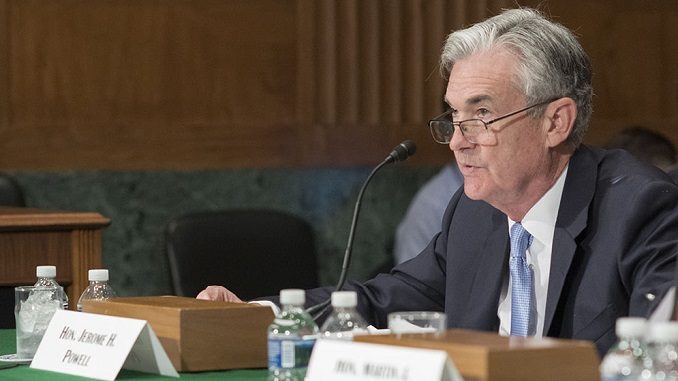
Federal Reserve officials were broadly comfortable with their make-no-moves posture on interest rates at their April 30-May 1 policy meeting, Wall Street Journal informs.
Many officials at the meeting said they expected a recent soft patch in inflation would be temporary, according to minutes released Wednesday. But several raised concerns about the implications for the economy if price pressures continued to defy expectations by holding at lower levels.
Officials didn’t specifically raise the prospect of an interest-rate cut, according to the minutes. Investor speculation over a rate cut had increased in the run-up to the meeting, the Journal noted.
The threshold for the Fed to lower interest rates absent a broader deterioration in the economy “is high—higher than markets expect,” said Diane Swonk, chief economist at accounting firm Grant Thornton. At the same time, she added, the minutes show “the bar for a rate increase is even higher.”
Several meeting participants expressed concern that inflation expectations could become fixed at uncomfortably low levels relative to the Fed’s 2% target “if inflation did not show signs of moving up over coming quarters,” according to the minutes.
The Fed’s economic staff downgraded its inflation forecast and saw inflation running slightly below 2% over the medium term.
Fed Chairman Jerome Powell pushed back against rising market expectations of an interest-rate cut at his May 1 news conference, which followed the meeting. He pointed to one-off price declines in a few items that had skewed recent inflation readings lower.
“There’s reason to think that these will be transient,” Powell said at the time. “We of course will be watching very carefully to see that that is the case.”
The minutes showed he was reflecting many of his colleagues’ view, though some also said they believed the risk that inflation would be weaker than expected had increased.
The meeting took place before a breakdown in trade talks between the U.S. and China led President Trump to raise tariffs on roughly $200 billion in goods to 25% from 10%, representing a significant escalation in tensions.
Fed officials believe 2% inflation is consistent with a healthy economy. Also, higher inflation can provide more room to reduce nominal interest rates in a downturn.
Even though the minutes revealed no discussion of a rate cut at the recent meeting, two district Fed presidents have begun staking out a case for one should inflation defy expectations by remaining soggy.
On Wednesday, St. Louis Fed President James Bullard said the Fed may need to lower its benchmark rate, even if the economy isn’t slowing, “to help maintain the credibility of the [Fed’s] inflation target going forward.”
Persistently low inflation “is justification for deciding that our setting of monetary policy is actually restrictive and we need to make an adjustment downwards,” said Chicago Fed President Charles Evans last month in an interview.
A second camp of Fed officials has expressed some misgivings about the potential for lower inflation readings to wear down inflation expectations, but they haven’t said if the Fed should act deliberately in such a scenario.
For example, Fed governor Lael Brainard last week said she would favor an “opportunistic reflation”—in which the Fed would signal an unhurried posture should inflation begin to rise above the 2% target—but didn’t discuss whether the Fed should cut rates if inflation didn’t rise on its own.
New York Fed President John Williams told reporters Wednesday he saw no reason to use monetary policy right now to move inflation higher because he expects inflation will move back to 2% “over the next year or two.”
“I’m committed that we see a sustained achievement of our 2% inflation goal,” he said.
Boston Fed President Eric Rosengren said Tuesday he still thinks rates are low enough to boost the economy. Still, he said that while monetary policy shouldn’t “overreact to temporary inflation misses from the Fed’s 2% target, it would not be desirable to continue consistently undershooting inflation.”
A third group of officials, including Kansas City Fed President Esther George and Fed Vice Chairman Randal Quarles, has more explicitly signaled no appetite to use monetary policy to try to fine-tune the inflation rate.
Fed officials have already made big changes to their policy stance over the last six months. When officials last raised rates in December, most projected another one to three rate increases would be needed this year to keep inflation at the Fed’s 2% target.

Be the first to comment